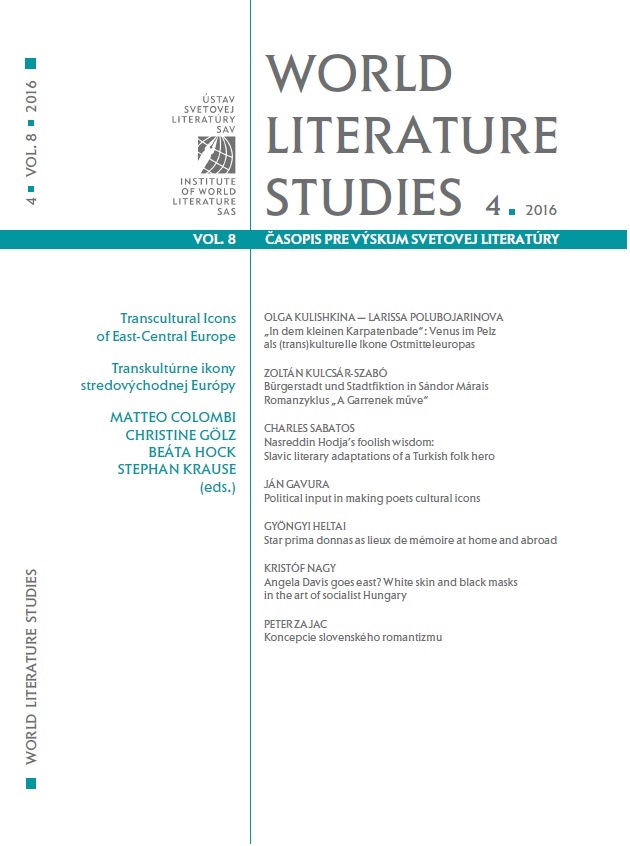Transcultural icons of East-Central Europe
Transcultural icons of East-Central Europe
Author(s): Matteo Colombi, Christine Gölz, Beata Hock, Stephan KrauseSubject(s): Language and Literature Studies
Published by: SAV - Slovenská akadémia vied - Ústav svetovej literatúry
Keywords: cultural icon; East-Central Europe; collective identities; discourses surrounding identity; self-assurance; membership; affiliation
Summary/Abstract: In this issue of WORLD LITERATURE STUDIES, the “cultural icon” is both a comparative interpretation and a term analytically applied to a well-chosen range of examples from East-Central Europe. According to North American cultural studies, a field where this concept has actively been developed, the cultural icon defines a historically and often geographically determined representation of collective identities in which, first and foremost, discourses surrounding identity, self-assurance, membership, and affiliation are solidified. In the perspective suggested here, these representations of collective identity may be historical agents or the fictional and fictionalized heroes and heroines of literature, films and other media. Likewise, places and their narratives, as well as particular objects of material culture, may also be such icons insofar as they share, embody, or stage features said to be essential of a culture. In this understanding, icons are repositories of certain features, but above all, they are entities that collectives discover to have an exceptional capacity for bearing this representative function. These entities, therefore, do not truly “become” iconic by themselves, but are made discursively. Icons are thus utilized as “strong figurations” with a “straight” and highly “immediate” link to a cultural identity, the role of which they are made to assume.
Journal: World Literature Studies
- Issue Year: 8/2016
- Issue No: 4
- Page Range: 2-4
- Page Count: 3
- Language: English

